Engineering a Year-Round Ice Hotel
- Youtube Views 9,416 VIDEO VIEWS
Video hosted by Tom Payne.
JUKKASJÄRVI is a small town in northern Sweden that each year becomes home to the world’s largest ice hotel. Historically the sculpture has melted each spring but now, thanks to an innovative new solution, it can stay year-round. We take a look at how it’s done in this video.
Jukkasjärvi is situated on the Torne River, some 200 kilometers north of the Arctic Circle. Every winter when the river freezes, a new 5,500 square metre ice hotel is constructed on its banks.
The hotel’s design is unique each year with over 200 designers collaborating to sculpt unique forms for the bar, gallery, 65 rooms and a church that is popular for wedding ceremonies.
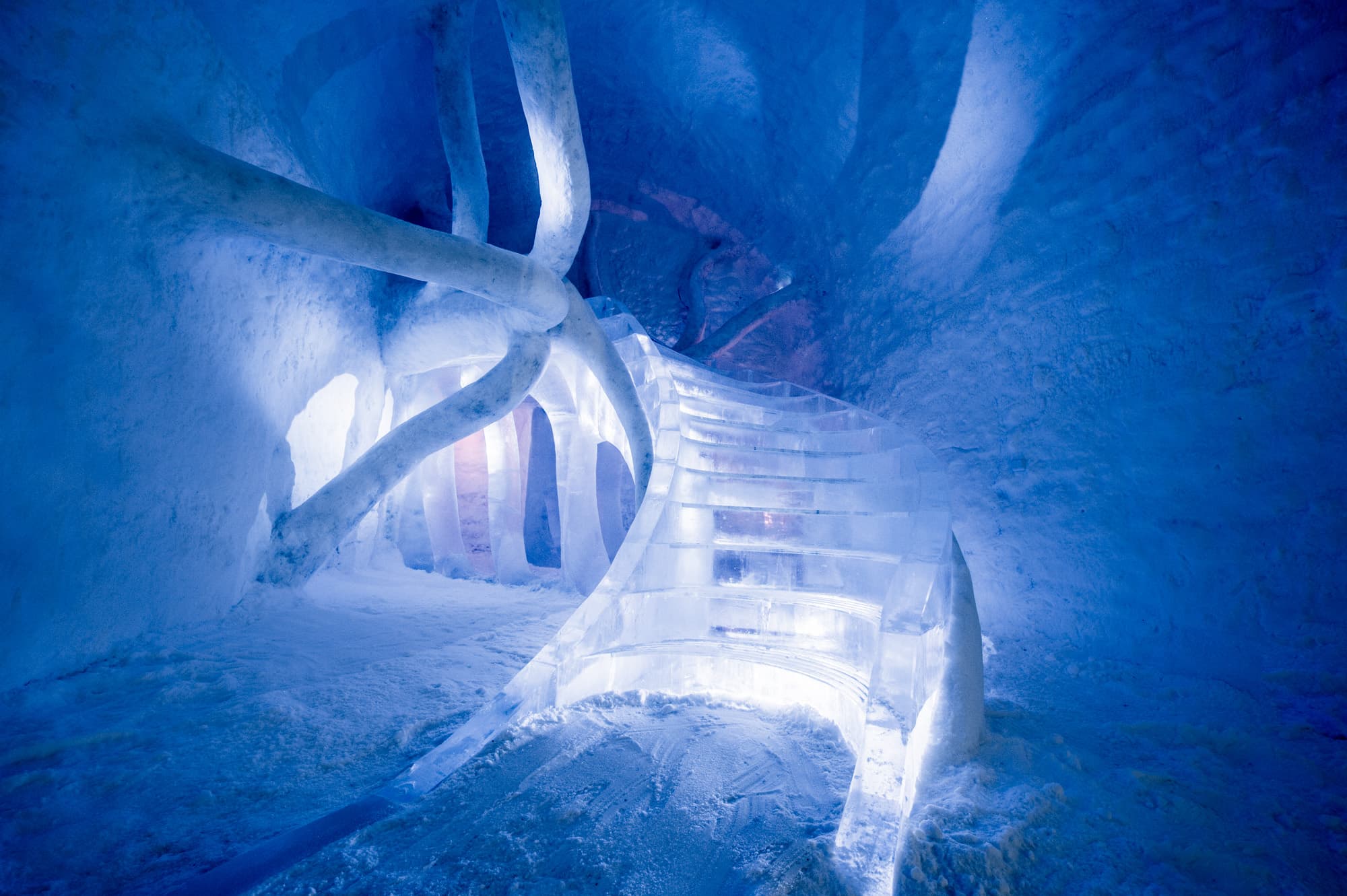
Above and Below: The Ice Hotel's impressive hand-carved design is unique each year (images courtesy of Asaf Kliger).
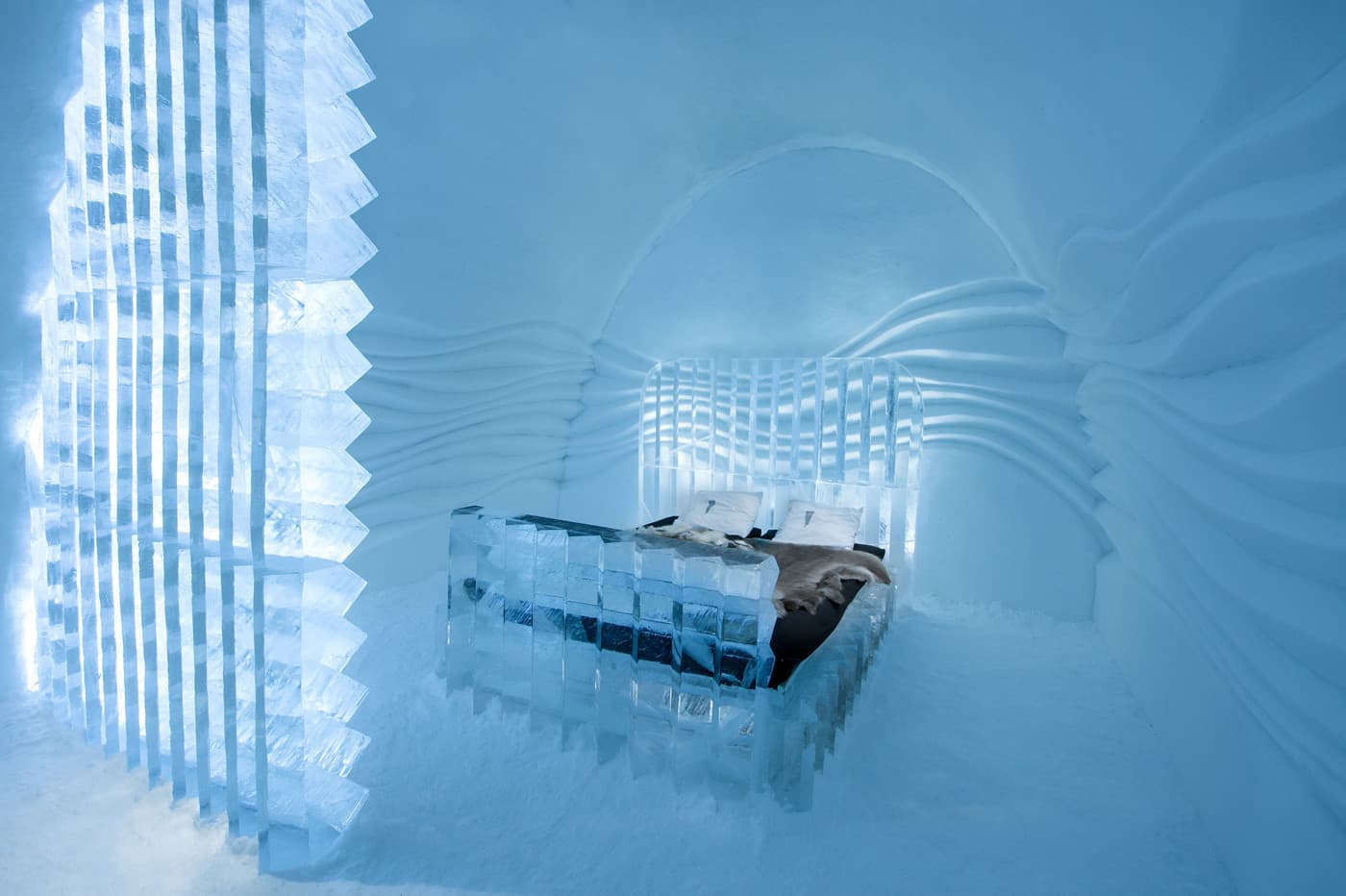
Guests usually stay for two nights in a “warm room” adjacent to the Ice Hotel with heating, bathroom and dining facilities. Their night in a cold room is spent on an ice bed in arctic sleeping bags protecting them from the hotel’s ambient temperature of -5 to -8 degrees Celsius.
The 2,500 ice blocks used to construct the hotel each winter are actually harvested during the previous spring and preserved in nearby storage halls ready for work to commence. The material used is referred to as “snice” – a carefully calculated mixture of snow and ice that reflects the sun’s winter rays and prevents the hotel from melting.

Above: The ice used in the hotel's construction is harvested from the river during the previous spring. Below: The process of hand-carving the hotel (images courtesy of Paulina Holmgren).
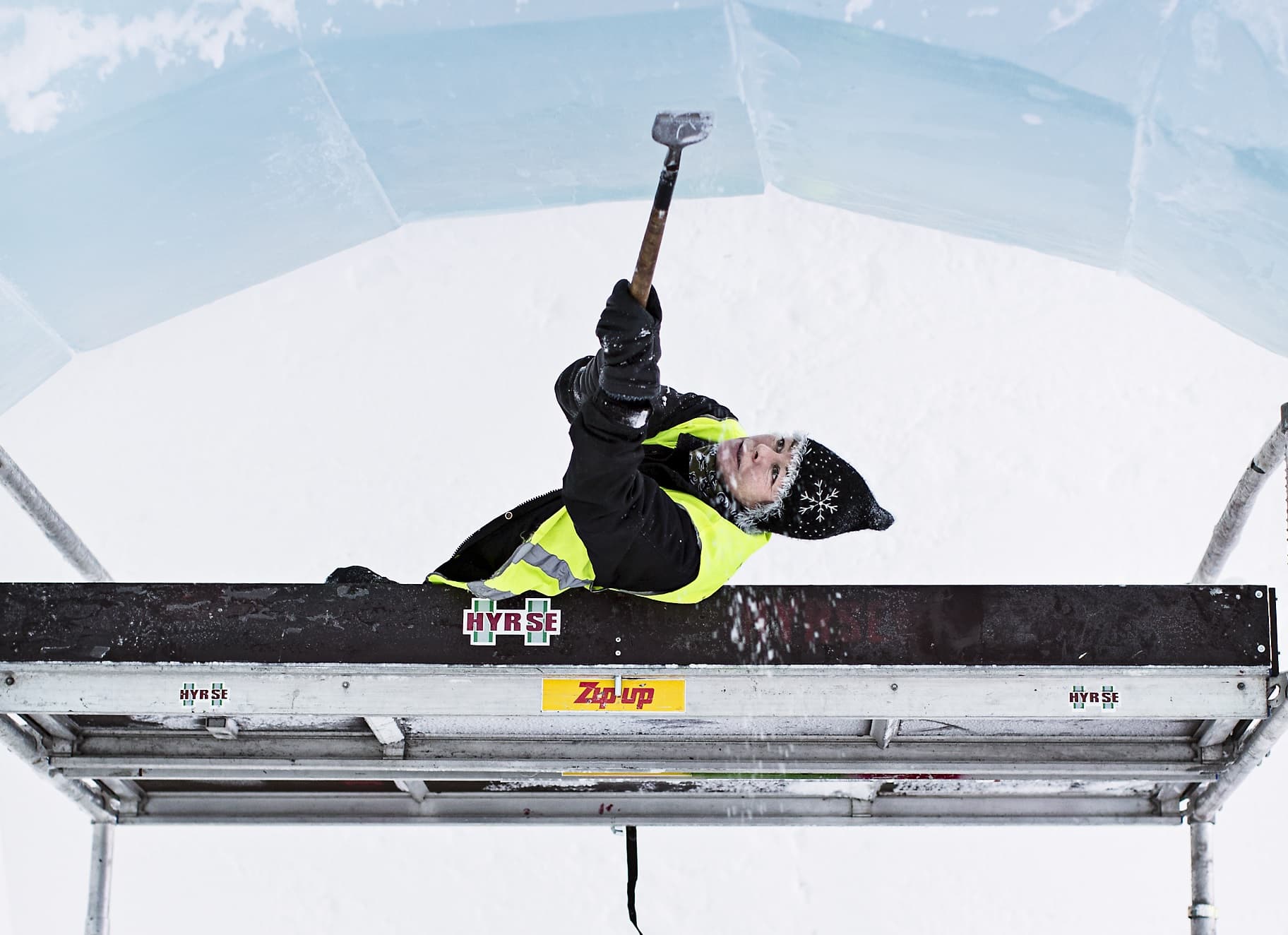
Jukkasjärvi’s high positioning on the globe means that it experiences almost 100 days of continuous daylight in summer months. Traditionally this midnight
sun has spelled doom for the Ice Hotel, and the unique sculpture has steadily melted back into the river. But a newly engineered approach is now
harnessing the continuous sunlight and turning it to the Ice Hotel’s advantage.
A vaulted concrete extension filled with snow and ice to create the same hotel experience, is being cooled by refrigerators that run on solar power.
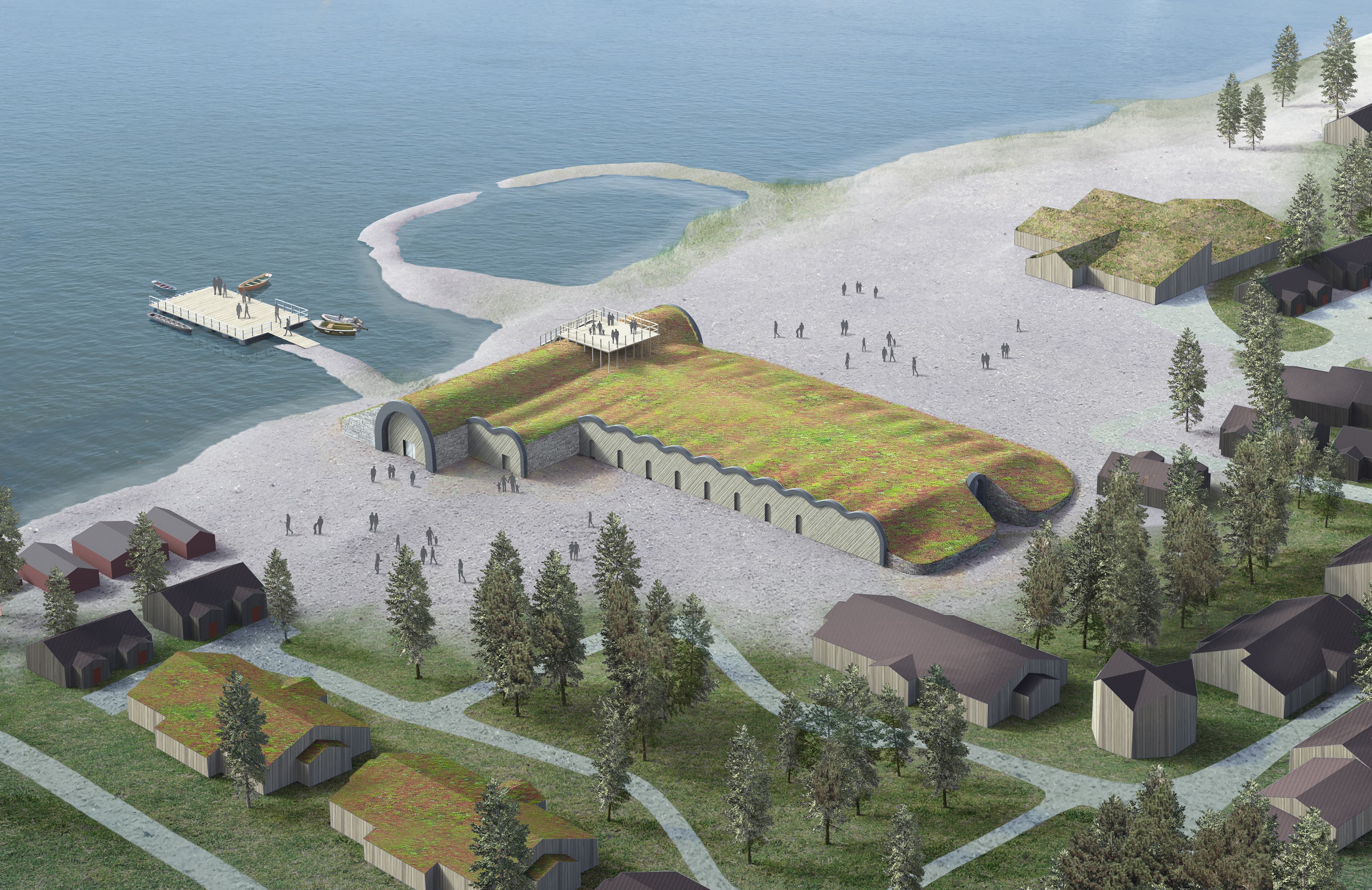
Above: The "Ice Hotel 365" extension that is powered by the midnight sun (image courtesy of PinPin Studio).
The site’s 600 square meters of photo voltaic (PV) panels have the unique ability to continuously capture solar energy during the summer months, converting
it into 130,000 kilowatt hours of electricity each year.
Whilst some of that goes toward maintaining the hotel’s low ambient temperature, the surplus is used for powering ancillary office buildings and the adjacent “warm room” hotel.
"The photo voltaic panels have the unique ability to continuously capture solar energy in the summer months"
The extension’s exterior is designed to blend with the surrounding landscape and be compatible with the winter Ice Hotel that is constructed each year.
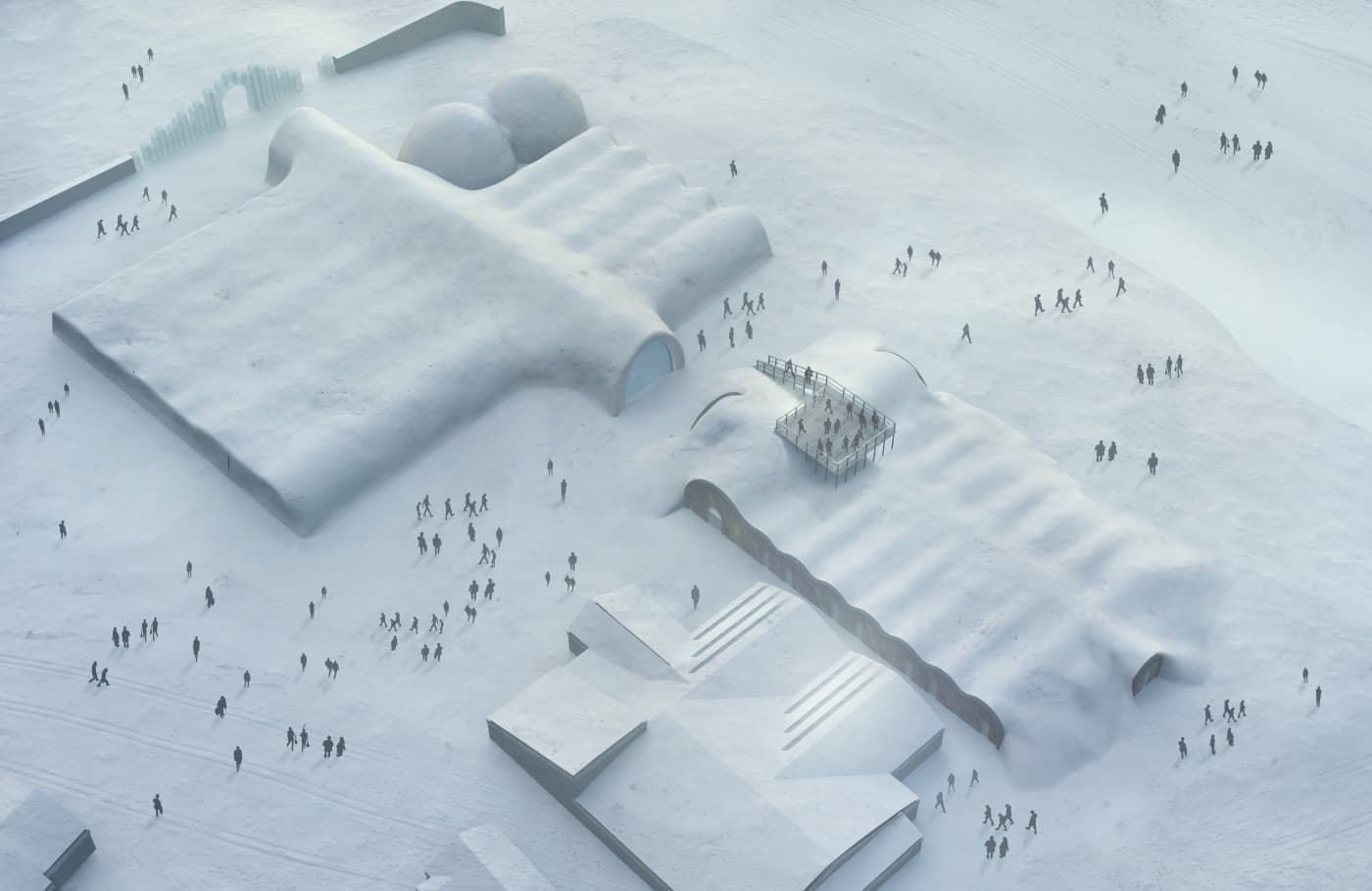
Above: The extension at the start of winter, ahead of the main hotel's construction (image courtesy of PinPin Studio).
With a 365 day operation in place from 2017, visitors can now choose whether to combine their Ice Hotel visits with dog sledding and the northern lights, or hiking under the midnight sun.
Learn more about the Ice Hotel and Ice Hotel 365, and find out how you can visit at IceHotel.com.
Images courtesy of Ice Hotel, Asaf Kliger, Johan Broberg, Martin Smedsén, Paulina Holmgren, PinPin Studio and videovan.com. Video thumbnail image courtesy of Asaf Kliger.
We welcome you sharing our content to inspire others, but please be nice and play by our rules.




